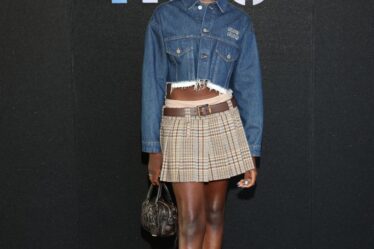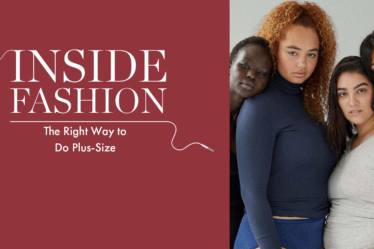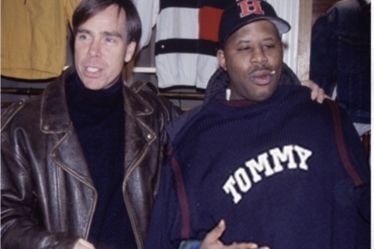
For the last two years, Shein has worked with thousands of independent designers, including former Project Runway contestants, fashion school graduates, tattoo artists and stay-at-home moms to design countless products.
The programme, which it calls SheinX, has been divisive from the start. Critics say it’s a blatant public relations move from a fast fashion giant accused of frequently ripping off emerging designers’ work, and increasingly finds itself the target of broadsides from sustainability advocates and anti-China politicians. Others say SheinX is providing a unique opportunity for emerging designers, often with non-traditional backgrounds, to get their creations in front of potential customers.
When BoF spoke with many of the SheinX designers themselves, though, most sounded a lot like ordinary shoppers with conflicting feelings about their latest Shein haul: fast fashion may be problematic, but one person can’t fix it, and where else will people find such affordable clothes?
In other words, if you can’t beat them, join them.
“When you see how much fashion goes into the landfill, you do feel bad, but at the same time I like working with Shein because I wouldn’t spend £150 on a dress,” said Becki Ball, a recent Norwich University graduate. On Shein, Ball sells colourful suits and printed dresses with embellishments.
Through the incubator, launched in 2021, Shein promises to guide designers through product development, manufacturing, marketing and the launch of their own collections. Shein says it has invested over $55 million and worked with over 3,000 designers and artists, who have earned nearly over $5 million across 25,000 items. In April, the company announced plans to add 500 more US-based artists.
Shein is at a point of inflection: After coming from nowhere to dominate online fast fashion in the space of a few years, Shein’s growth has slowed. The company raised funding at a $64 billion valuation in January — down from $100 billion in April 2022 — and is reportedly headed for an initial public offering. There are signs Gen-Z consumers are tiring of the brand, which has faced relentless criticism for its environmental impact, the quality of its clothes and copycat allegations.
Meanwhile, US legislators are pressing Shein over alleged forced labour in its supply chain.
Shut Down Shein, an advocacy group with anonymous backers, launched an advertising campaign earlier this year to amplify these claims.
Last year, Shein hired DC-based lobbying firms to improve its image, according to Politico. SheinX, which employs hundreds of American artists and is based in Shein’s LA tech hub — surely plays a part in that. It also represents a low-cost way for the retailer to put a face to its business model, which mainly relies on anonymous manufacturers to produce endless varieties of styles at lightning speed.
“They’re fighting a world which is becoming hostile to fast fashion,” said Sucharita Kodali, Forrester retail analyst. “[SheinX] is an effort they’re introducing to try to stay afloat when they’re swimming upstream.”
Fashion by the People and for the People
Of course, Shein doesn’t talk about Xinjiang cotton or DC lobbyists when it describes the origins of SheinX.
“The fashion industry can be so dense, so impenetrable, maybe elitist,” said Peter Day, Shein’s global head of strategy and corporate affairs. “We felt there’s an opportunity to bring others along, share our learning, share our capabilities and empower a new generation of designers.”
After submitting sketches, designers who gain entry to the programme sign contracts, then upload specifications for around 10 pieces and pick from pre-selected fabrics (mostly cotton, polyester and spandex). Shein product managers choose which to make, suggest alterations — such as cutting down on rhinestones or seams to keep production inexpensive and easy — and get samples approved. Unless commissioned for a special collection or contest, designers aren’t paid up-front, earning a 10 percent commission on sales.
Shein promises designers “ownership rights to their SheinX designs.” What that means is up to how Shein defines ownership and intellectual property, both notoriously tricky to nail down when it comes to garments as opposed to flat designs or drawings, said Susan Scafidi, professor of fashion law at Fordham Law School. Most fashion designs and variations on designs aren’t protected by intellectual property law.
Some designers who worked with Shein say the retailer gave them a chance when no one else would. Working with the label has helped them finance their own brands or launched careers in fashion.
For Naomi Dale, now an assistant designer at Free People, Shein was the first to crack fashion’s door open when she graduated. She said the commission seemed fair because she was young and inexperienced, and the programme didn’t require much work.
The programme has notable successes: designer Kenya Freeman, who runs Sylvia Mollie, launched a collaboration with plus size retailer Torrid in 2021. Casey Russel told The New York Times he made $53,000 off the 13 pieces in his first collection.
For a fashion student in London or an aspiring designer in Los Angeles, earnings from SheinX are closer to lunch money than a living wage, though for the smaller cohort of participants living in Mexico, the Philippines and other developing countries, the economics can be more favourable. And even $100 a month in a designer’s pocket represents quite a few $5 dresses.
“The money was kind of a bonus,” said Abenezer Mengesha, Creative Arts Agency digital designer and founder of Abojel, who said she joined SheinX to grow her profile and experiment with new ideas.
The author has shared a Flourish data chart.You will need to accept and consent to the use of cookies and similar technologies by our third-party partners (including: YouTube, Instagram or Twitter), in order to view embedded content in this article and others you may visit in future.
Shein gets a standard exclusivity term of one year on SheinX merchandise, but can keep producing items indefinitely if they prove popular. Garments run the gamut: some designs exhibit technical know-how, creativity and product expertise; others are virtually indistinguishable from the anonymous, trend-driven designs that are a staple of online fast fashion. Around a third of participants put out at least three collections, said Day.
Some participants, mostly graphic designers or artists, simply license their work to Shein, and collect fees on any products sold, from stickers to T-shirts and leggings. Artists who choose the commission-based model have some say on the products their work appears on.
For designers, Shein’s marketplace is the mentor. Performance on the site shows them how their vision resonates (or doesn’t), said Day. SheinX has also put on events, given 12 students at LA-based Fashion Institute of Design and Merchandising $40,000 scholarships, access to courses and opportunity to sell; and connected some of its stars with Monse and Oscar De La Renta co-creative director Laura Kim for further mentorship, he said.
Ball, the Norwich University graduate, got a look inside how runway shows — and fashion after-parties — work when she made looks for Shein’s “Feel Da Vibe” Paris show in 2022.
“It was like a taste of the good life,” she said. She vlogged and Instagrammed it.
Living With the Leviathan
Some designers said they thought hard about Shein’s reputation before signing on with SheinX.
Victoria Harris, a full time sales associate at a travel company who makes one-of-one occasion looks out of upcycled fabrics, said she was aware of the company’s reputation for copying designs.
“It’s a thing [that happens] in the entire industry that’s annoying. But sometimes you gotta try to benefit off of it,” said Harris.
For better or worse, knowing how to design for fast fashion has become crucial for making a living in the industry, said Barbara Bundy, FIDM’s VP of education.
“[Students] may come in wanting to be the next Yves Saint Laurent or Karl Lagerfeld, but chances are you’re going to be designing for fast fashion or for the mid-market,” she said. “It’s fast fashion that pays the bills.”
Isela Cos, a designer who paused her bespoke business after her daughter was born, said she saw herself doing something more along the lines of Haute Couture, but found Shein’s bid hard to resist.
“It’s a little different from what I wanted to do, but it’s a cool opportunity,” said Cos.
Still, whatever benefits designers receive from SheinX, the fast fashion giant is almost certainly benefitting more, said Scafidi.
“Shein is telling designers ‘we’ll elevate you and give you lots of exposure on our platform,’” she said. “Another way to read that is ‘we’re going to be using your name, your likeness, your trademarks to advertise for Shein.’”
By tapping designers in new markets, Shein gets insights as it expands. Two of SheinX’s most-represented geographies are Mexico and Brazil, where it announced plans for factories this year.
Kodali, the Forrester analyst, said at its core, SheinX is similar to gig work — temporarily employing designers without the need to pay benefits and other expenses that come with full employment. (Shein also employs over 250 designers in house.)
“This is a way to inject … creativity at a relatively low cost,” she said.
The author has shared a Flourish data chart.You will need to accept and consent to the use of cookies and similar technologies by our third-party partners (including: YouTube, Instagram or Twitter), in order to view embedded content in this article and others you may visit in future.
Similarly, access to Shein’s infrastructure gives designers the ability to sell at a price point more attractive to potential customers — meaning a lot of designers who would have difficulty keeping a brand open can keep producing collections.
“If I was to create my collection myself, the price would be so much higher. Unless I had loads of money to spend on marketing it would be so much harder to reach people,” said Ball.
There are signs SheinX may already be helping Shein’s image, though on a small scale. According to Brandwatch, since January 2021, 70 percent of Shein mentions online were negative; 76 percent of Shein X mentions were positive. (Shein was mentioned nearly 4 million times, and SheinX just 30,000.)
That hasn’t stopped the threat to its business from escalating. Last week, the European Parliament backed recommendations to toughen measures to limit excessive fashion consumption and production.
In fashion, help is hard to come by. At its core, the program represents a rare industry support structure, said Gary Wassner, CEO of Hilldun Corp, who gave a talk on entrepreneurship at a Shein’s Summit in April. Whether that benefits Shein from a PR standpoint doesn’t matter if they help designers in the long term.
“For designers, it’s an opportunity to bring in revenue outside of their own efforts in their own company or brand,” said Wassner. “[For Shein] it’s the follow-up that matters, it’s what they actually do. I’m waiting to see what their next steps are.”



